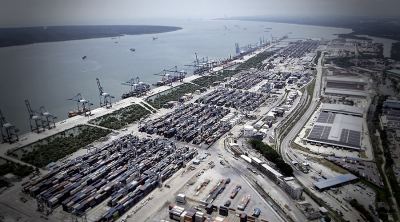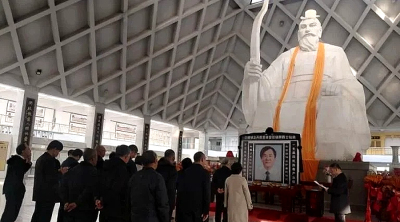
As part of the wider subsidy rationalization agenda, the present administration is looking into reviewing and withdrawing the electricity subsidies for the T20 income category.
As with any subsidy rationalization implementation, many in the T20 group will be affected although the extent of the impact will depend on the scale of (the combined) disposable income and earnings.
To be sure, this is nothing new as talks of subsidy rationalization goes all the way back to the Tun Abdullah Badawi era (which was correlated to deficit reduction but then simultaneously increasing the off-balance sheet burden of the government).
And, of course, Tun Abdullah Badawi’s predecessor, the now disgraced sixth Prime Minister pursued the agenda with the Goods and Services Tax (GST) as a policy prequel (i.e., where the regressive nature of the “consumption” tax is counter-balanced by the progressive nature of the subsidy withdrawal for the higher income.
According to the Minister for Natural Resources, Environment and Climate Change Nik Nazmi Nik Ahmad, electricity tariff adjustments are in the offing based on the Imbalance Cost Pass-Through (ICPT) mechanism for a period of six months which will start from July to December this year (“Electricity tariff adjustment for T20 to be announced soon: Nik Nazmi,” New Straits Times, May 23, 2023).
This means that the electricity subsidies would be more targeted – enabling savings to be made by the government which in turn would allow an increase in aid for the lower income B40 and struggling M40 without necessarily burdening the public finances.
It’s reported that for 2022, the total subsidies bill ballooned to RM80 billion.
Currently, as per the Department of Statistics (DOSM)’s Household Income Estimates and Incidence of Poverty Report (2020), the T20 are (mainly) households with an income (of combined earnings) in excess of RM10,971.
However, in view of the persistent rise in the cost of living and inflationary pressures (notwithstanding the decrease in the CPI as the official figure), and given that the income classification is calculated according to household (rather than individually as such), couples with children in the T20 category would be feeling the pinch also, especially those in the T1 sub-category (earning between RM10,971 to RM15,040, with the mean income at RM12,586).
This means that, individually, there would be those in the T1 who earn between RM5000 to 5500 each (husband and wife), for example.
Hence, the distributional impact of inflationary pressures/increased costs of living on each person’s earnings would be “equal to” or no different than a single M40 person earning a comparable income or even a lower M40 household (i.e., combined earnings in that range).
Furthermore, according to the same DOSM 2020 Report, “paid employment and self-employment which were the main sources of income recorded a decrease of negative 16.1 per cent and negative 9.7 per cent respectively.
Thus, the mean of monthly household gross income decreased by negative 10.3 per cent to record RM7,089 as compared to RM7,901 in 2019.”
As it is, “the decline was contributed by households or individuals who experienced loss or reduction of income particularly those with the status of employee, self-employed and others. Furthermore, this reduction of income was not only caused by job loss but also contributed by the reduction of working hours and increase in skill-related underemployment.”
Thus, the current income classification – which already doesn’t take into account the distributional impact on the disposable/net earnings – is also in effect constructed set against the backdrop of a lower baseline (“low base effect”) due to the impact of Covid-19 in addition to the cost of living and inflationary pressures which also results in reduced purchasing power as vividly embodied by the phenomenon of “shrinkflation.”
The government is currently finalizing the findings of the Household Income, Expenditure and Basic Amenities Survey (HIES/BA) 2022 which involved 92,000 households from the period of January to December 2022.
The report is expected to be out sometime in the middle of the year, most likely by early 2H 2023 (“Govt updating household income data, report expected to be ready by middle of year,” Bernama, March 16, 2023).
According to the Ministry of Economy, the income data for each household grouping will be updated accordingly.
Therefore, a re-classification of the T20 (among others) is timely.
Ideally, it’d mean that the household salaries (combined or otherwise) within that category would have to rise in line with inflation, cost of living and (reduced) purchasing power.
This is negatively analogous to the nominal increase in income that results in higher tax burden (i.e., the taxpayer concerned is pushed into a higher income tax bracket) but without necessarily experiencing real wage growth due to inflation – “bracket creep.”
In re-looking at the income classification overall, including the T20 also, it should be expected that the T20 would now be the “T10” (based not least on anecdotal evidence also) just as many from the M40 have slipped into the B40.
This is especially pertinent as slightly more than half – 53.8% – of the T20 live in the Klang Valley.
The percentage translates into some 783,000 of Malaysia’s 1.46 million T20 households.
The figure comprises 539,900 households in Selangor, 228,500 in Kuala Lumpur and 14,600 in Putrajaya (“Special Report: Why high T20 numbers may have scant meaning,” The Edge, August 31, 2020).
As it is, the Klang Valley has the highest cost of living as measured according to real estate/property prices (and, by inclusion, installment payments linked to the variable interest rates) and rentals as well as not least food prices, among other things – major drivers of spending and expenses.
Food expenses (with eating out given greater “weightage” rather than cooking) in the Klang Valley are typically between 20% to 30% higher than the next in line or nearest comparison, i.e., counterpart conurbations, e.g., Penang.
In terms of housing (installments and rentals), the gap could widen to as much as 100%++ (“The cost of living battle: Kuala Lumpur vs. Penang,” CompareHero, March 11, 2019).
It’d not be anomalous, therefore, to expect that many in the Klang Valley, especially Selangor and the Federal Territory of Kuala Lumpur, would have suffered and incurred financial losses and lifestyle downgrades due to the economic impact of Covid-19 and the subsequent inflationary pressures.
The rental market in the Klang Valley has been recovering with rents going up as high as twenty percent (“The Klang Valley’s 1H 2022 median rental price rise indicates that the rental market is recovering,” New Straits Times, September 26, 2022).
For homeowners of properties worth RM1 million and above, the consecutive OPR hikes would see their installments increase by at least RM200 extra each time (“OPR hike will exacerbate cost-of-living crisis for homeowners,” Free Malaysia Today, May 4, 2023).
This would exert further pressure on the already weakening/reduced disposable income of the relevant/applicable T20 households where, as it is, the classification is simply by dint of combined earnings.
According to the Minister of Economy Rafizi Ramli, at least 20% of the M40 households have become B40 due to the impact of the Covid-19 lockdowns with 12.8% of the T20 downgraded to M40 in 2020.
The numbers would have increased since then due to the scarring effect of Covid-19.
Even those who haven’t downgraded into the M40 category are struggling – given the numerous (number) and high (level) expenses which have to be incurred especially if the T20 households have children, such as costs of education (including pre-school).
As such, the current/pre-existing framework can no longer be deemed an accurate classification and there should be a paradigm shift.
The reclassification of the income category could be partly based on, e.g., the annualized inflationary increase from 2020 to Q1 or Q2 2023 (i.e., equivalent average rate of growth per annum/year that’ll yield the same growth rate as that observed over the entire time span) based either on the year-on-year (YOY) or year-to-date (YTD) formula.
This is to take into account the growth of real wage throughout that period as well as providing some “insights” or projections of a constant nature into future inflation growth rate.
The re-categorization of the T20 or pushing up of the income bracket, therefore, should be in tandem with the consistent/constant rise in inflation.
This can be partly done by taking into account the annual inflationary increment and making the adjustments accordingly.
DOSM should ensure that inflation be given greater or equal weightage, if at all, in the income/salary bracket adjustments for the T20 (and not just for the M40 and B40).
In turn, the inflationary pressures should be correlated with eroding purchasing power (RM’s value) and, by extension, increased financial burden and, by inclusion, less savings.
Less savings implies less disposable income and wealth – net financial assets (NFA) – which portends even less savings in the future.
This on the basis that whilst inflation hits the poor and lower income the hardest, it also affects the higher income to a certain extent who precisely because of the way the categorization is constructed may not necessarily be rich even in the relative sense, especially for households with large families, including not least children who are in the transition years (i.e., either transiting from secondary education to tertiary education or from tertiary education to the jobs market).
This makes for the current T20 classification of the income levels redundant – as those in the T1 (i.e., lower) tier (of the T20 group) would, in effect, experience the same loss of purchasing power as the other two categories but without the safety nets (e.g., unconditional cash transfers/UCTs).
Even some of the financial cushioning afforded by the personal income tax cuts under Budget 2023 for those earning between RM35,000 to RM100,000 of 2% aren’t adequate to cushion against the loss of purchasing power and inflationary pressures.
In the final analysis, re-looking and revamping the M40 (and by inclusion the B40) category (“Malaysia’s ‘new poor’ in dilemma,” New Straits Times, December 15, 2022) not only by default entails reconstruction of the T20 category.
But the revision should also include (re)assessing the impact of reduced purchasing power on the higher earners who aren’t wealthy (i.e., with low savings except enforced via the EPF) and have high levels of indebtedness (but without the legal protection afforded to entrepreneurs and business owners via the concept of limited liability applicable to hybrid partnerships and companies).
The imminent or looming global economic downturn shouldn’t be overlooked as well – which will not only widen the income and wealth inequality between the so-called “T20” and the rest but also within the T20 itself, i.e., between wage earning professionals (T1) and the high-level executives endowed with shares and lucrative compensation packages (T2).
EMIR Research calls for the refining of the T20, M40 and B40 income classifications based on the “household net disposable income” (as announced by the Minister of Economy Rafizi Ramli) to be undertaken first before any move towards subsidy rationalization in general is to be implemented.
(Dr. Rais Hussin and Jason Loh Seong Wei are part of the research team of EMIR Research, an independent think tank focused on strategic policy recommendations based on rigorous research.)
ADVERTISEMENT
ADVERTISEMENT






































